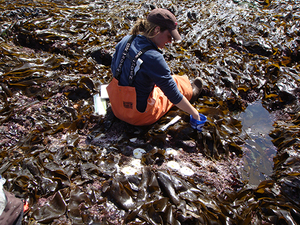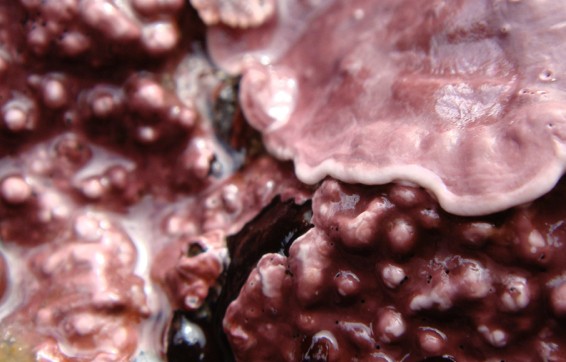Coralline algae have an important hermatypic (reef-building) purpose in coral reef communities, but perhaps the most important ecological role coralline algae fill is providing a microhabitat for the larvae of molluscs, echinoderms, and other herbivorous marine invertebrates. On the rocky coasts in the northwest Atlantic, for example, the larvae of sea urchins, chitons and limpets rely heavily on the calcareous microstructures of coralline algae as a refuge from predators and suffer 100% mortality without their presence. Coralline algae also serves as an important food source for some of those invertebrates once they reach adulthood.
The lives of coralline algae (and the lives of their invertebrate larvae-partners) revolve around even the most minute changes in marine chemistry, and in communities with several similar sympatric, competing species of coralline algae, changes in diversity and relative abundance can be indicators that something greater is amiss. McCoy's research has revealed that Pseudolithophyllum muricatum, once the dominant species of coralline algae in Tatoosh Island, now has only a 25% success rate over competitors. McCoy explains that P. muricatum is losing out because it produces more calcium carbonate than its competitors:
“Some species are more affected than others. So the ones that need to make more calcium carbonate tissue, like P. muricatum, are under more stress than the ones that don’t.”
Learn more about Sophie McCoy's research here.
Author: Matthew



 RSS Feed
RSS Feed
